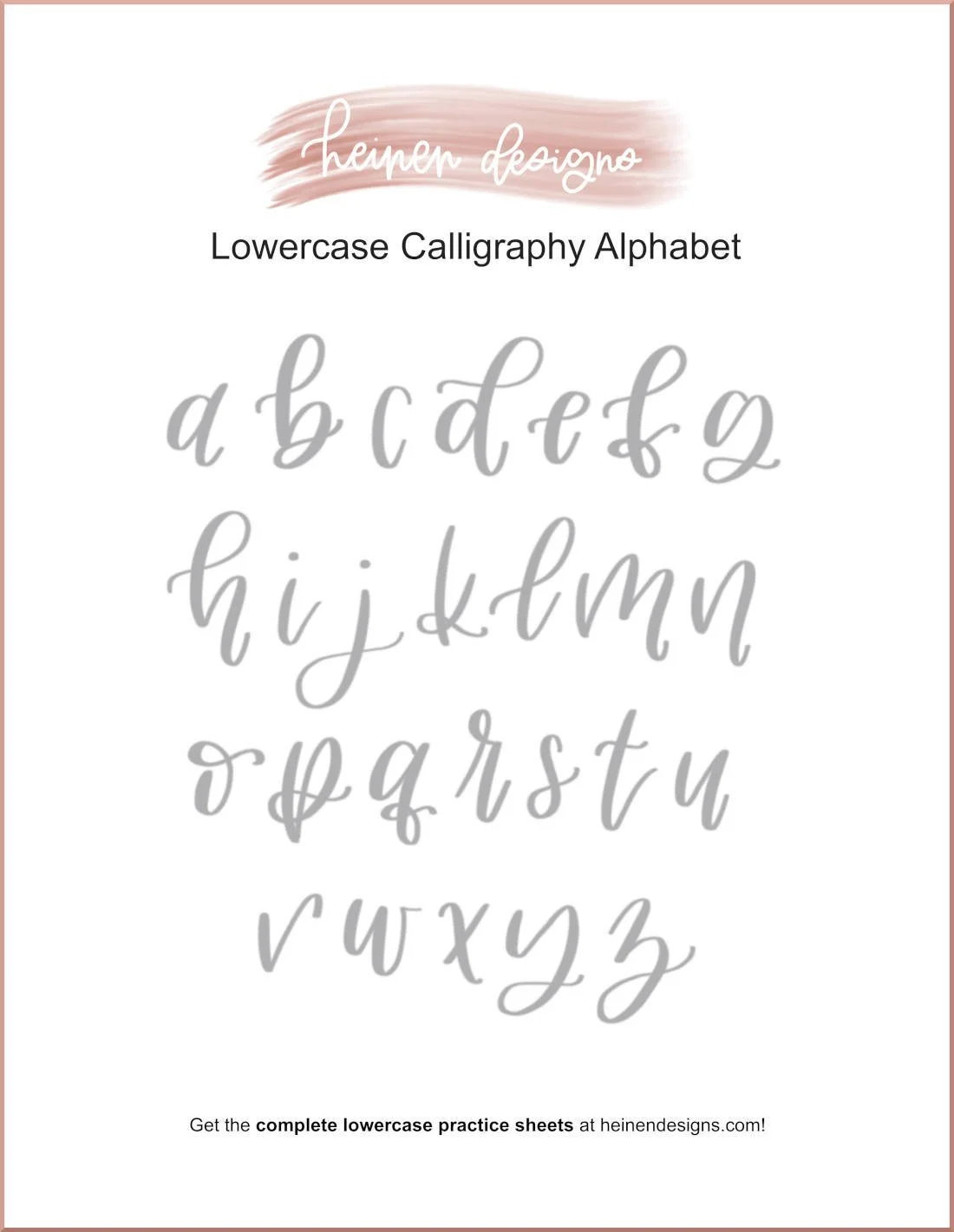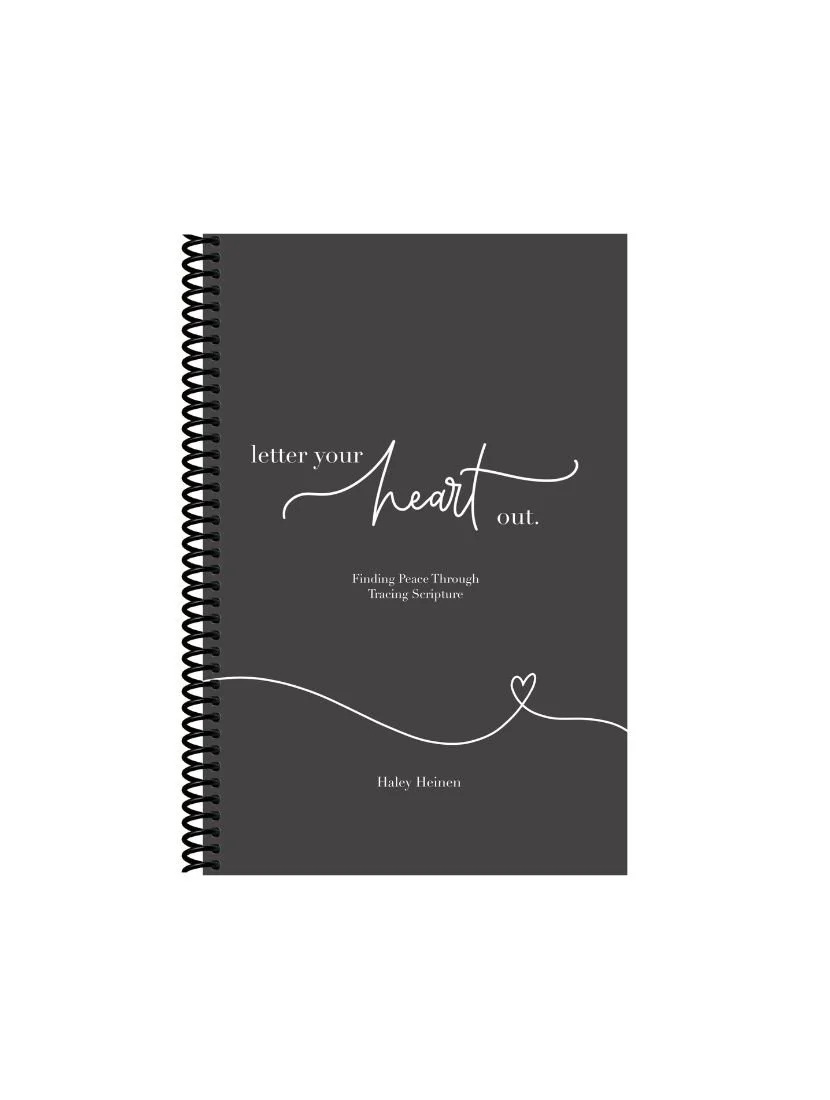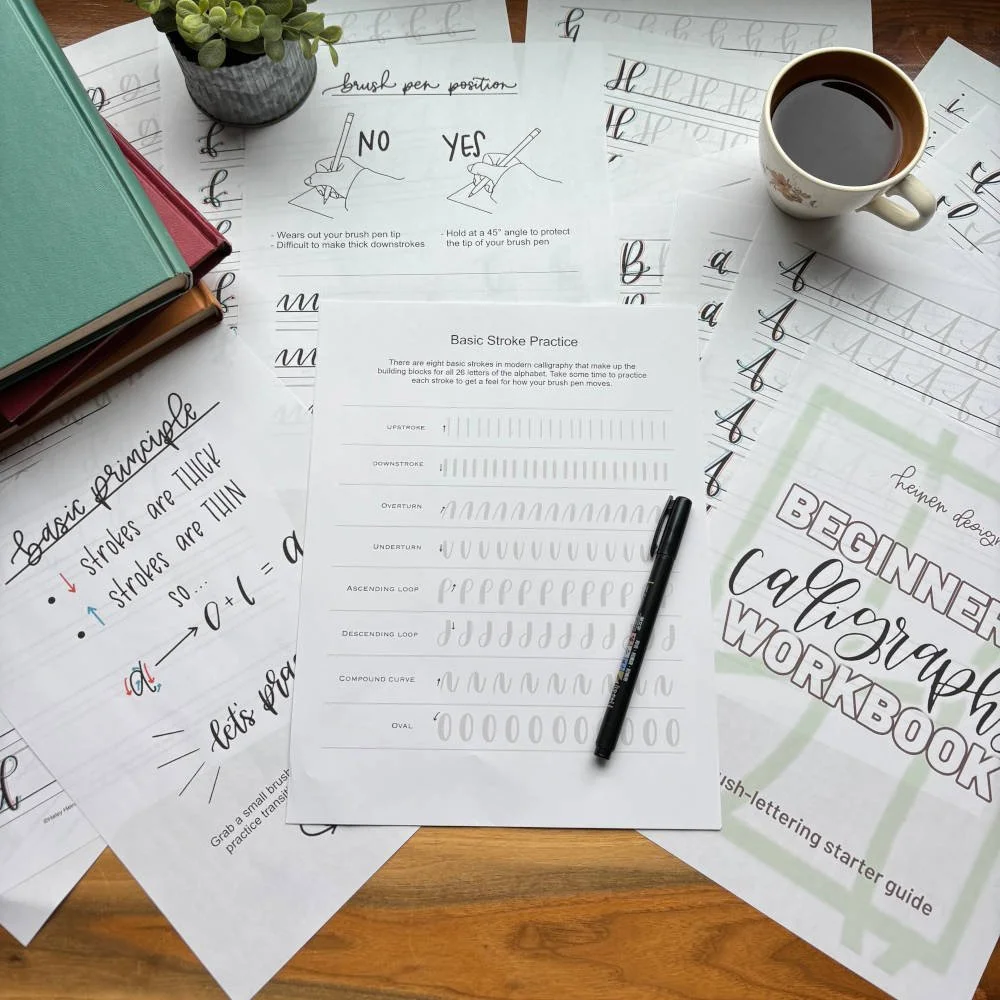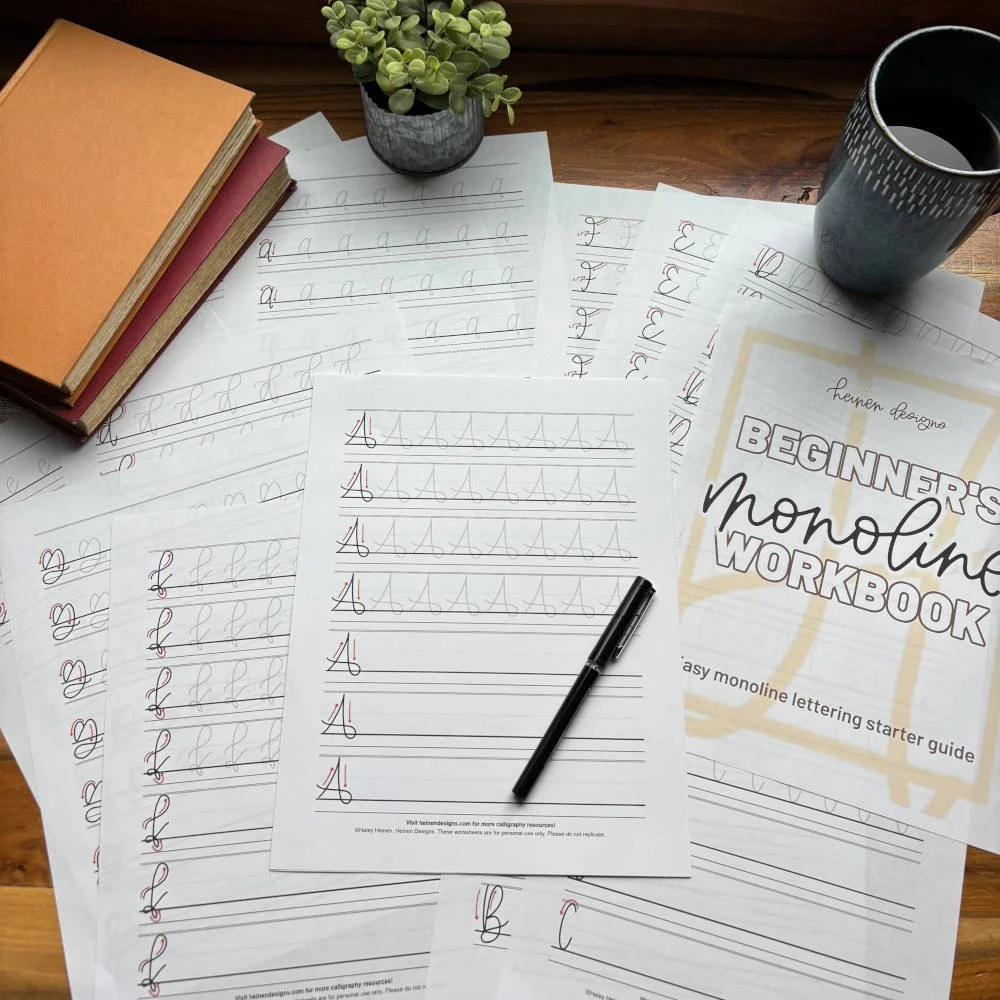What Is Modern Calligraphy? A Beginner’s Guide
If you’ve been scrolling Pinterest or Instagram and stumbled across those beautifully flowing letters on wedding invitations, handmade cards, or motivational prints, you might be wondering: what exactly is modern calligraphy, and how can I learn it?
Modern calligraphy is one of the most popular creative hobbies today. It’s beautiful, expressive, and surprisingly approachable, even for complete beginners. In this guide, we’ll break down what modern calligraphy is, how it differs from traditional calligraphy, the tools you’ll need, and how you can start learning today.
Tap to jump to a topic:
Scroll down to download our FREE practice sheet!
What Exactly Is Modern Calligraphy?
Modern calligraphy is a style of decorative writing that emphasizes creativity and personal expression. Unlike traditional calligraphy, which follows very strict historical rules (think Gothic, Italic, or Copperplate scripts), modern calligraphy is flexible. It borrows the foundation of calligraphy — creating contrast between thick and thin strokes — but allows you to bend the rules to develop your own unique style.
In other words, modern calligraphy is less about copying centuries-old alphabets and more about finding a way to make your letters yours. It’s playful, adaptable, and perfect for everything from wedding signage to bullet journaling.
How Modern Calligraphy Differs from Traditional Calligraphy
Traditional calligraphy is rooted in discipline. Each historical script (like Blackletter or Copperplate) has exact proportions, line angles, and spacing that must be followed to be considered “correct.”
Modern calligraphy, on the other hand, is more free-form. While it still relies on the calligraphy principle of varying stroke thickness (thick downstrokes, thin upstrokes), there’s much more room for creativity. Letters don’t have to look exactly alike every time. You can mix scripts, add flourishes, and experiment with layouts.
A simple way to think about it:
Traditional calligraphy = following centuries-old rules.
Modern calligraphy = learning the rules, then bending them to create your own style.
Tools Commonly Used in Modern Calligraphy
The great news is that you don’t need a ton of supplies to get started with modern calligraphy. Here are the most common tools beginners use:
One of the best things about modern calligraphy is how little you actually need to get started. At its core, all you really need is a pen and paper.
Any Pen (for Monoline or Faux Calligraphy): If you’re just exploring calligraphy for the first time, a regular ballpoint, gel, or fineliner pen will do. You can practice shapes, letterforms, and even create faux calligraphy by thickening your downstrokes afterward with a second line.
Brush Pens (for Thick-to-Thin Strokes): To capture the signature modern calligraphy look with natural thick downstrokes and thin upstrokes, you’ll want a brush pen. These pens have flexible tips that respond to pressure, making it easy to achieve beautiful stroke variation.
Paper: Start with whatever you have at home, but smoother paper is ideal because it helps your brush pens last longer and keeps ink from feathering. Printer paper works fine for practice, but marker paper or a sketchpad with smooth pages is even better.
That’s it! While there are endless tools and fancy supplies available, you don’t need much to begin. Many calligraphers start small — with just a pen and some paper — and gradually explore more specialized tools as they grow.
Adding Digital Tools (Optional)
While pen and paper are the foundation of modern calligraphy, many artists also explore digital calligraphy as part of their creative process. This isn’t something you need right away, but if you’re curious about lettering on a tablet or making digital designs, here are some options:
iPad + Apple Pencil: The most popular setup for digital calligraphy. Paired with an app like Procreate, it lets you simulate brush pen strokes with endless brushes, colors, and textures.
Procreate or Similar Apps: Procreate is the favorite for most calligraphers, but there are other great apps like Affinity Designer or Adobe Fresco. They allow you to practice without using up paper and pens and undo mistakes instantly.
Digital Brush Packs: Many lettering artists create and sell custom brush packs that mimic real brush pens, watercolor textures, and more. These can give your lettering a unique style.
Vector Software (Optional): If you’re interested in turning your calligraphy into products (prints, logos, etc.), you may eventually want to digitize your work with software like Adobe Illustrator.
Digital tools aren’t required to learn modern calligraphy, but they can be an exciting way to expand your practice, experiment with new styles, and even prepare your lettering for products or freelance work.
The Core Principle: Thick & Thin Strokes
No matter what tool you choose, modern calligraphy is built on one fundamental principle: contrast between thick and thin strokes.
Downstrokes (when your pen moves downward on the page) should be thick.
Upstrokes (when your pen moves upward) should be thin.
This simple idea is what separates calligraphy from ordinary handwriting. Learning to control pressure on your pen is the key to getting that elegant, professional look.
A great way to practice is to start with drills, basic lines, curves, and loops that help you build muscle memory for consistent thick-to-thin strokes.
Modern Calligraphy Also Goes Beyond Thick & Thin
While the thick-and-thin look of brush lettering is perhaps the most recognizable style of modern calligraphy, it’s not the only way to practice this art form. One of the things that makes modern calligraphy so appealing is that it’s flexible and creative. You’re not locked into just one method.
Monoline: The monoline style uses a pen or marker that creates a consistent line width, so there’s no contrast between thick and thin strokes. It’s simple, approachable, and a great starting point for beginners who don’t want to worry about pressure control right away.
Faux Calligraphy: The faux calligraphy method mimics the look of brush lettering without needing a brush pen. You write a word in monoline, then go back and add thickness to the downstrokes manually. It’s a fantastic way to learn the rhythm of calligraphy without special tools.
Mixing Styles: Many modern calligraphy projects combine brush lettering with monoline or faux or other calligraphy styles for added variety. For example, you might pair a flowing brush script with a clean monoline tall and thin font to create contrast in a design.
In short, modern calligraphy isn’t limited to pressure-based lettering; it’s an umbrella that welcomes different techniques, styles, and levels of formality. Whether you’re holding a brush pen, a gel pen, or even a ballpoint, you can create beautiful, modern calligraphy.
Why People Love Modern Calligraphy
Modern calligraphy isn’t just pretty to look at; it’s also deeply rewarding to practice. Here’s why so many people fall in love with it:
Relaxing: Repeating strokes and letters can feel calming, like a creative deep breath.
Community and Inspiration: There’s a thriving online world of lettering artists who share tutorials, ideas, and encouragement.
Low Cost to Get Started: All you really need is a pen and paper. There’s no need to invest in expensive tools to begin experimenting.
Accessible for Beginners: Unlike traditional scripts that require strict precision, modern calligraphy embraces imperfection. You don’t have to master rigid rules to make something beautiful.
Room for Creativity: Modern calligraphy is flexible. There’s no “one right way” to form a letter. You can explore flourishes, different letter shapes, and playful variations without breaking any rules.
Practical Uses: From addressing envelopes to making wall art, journaling, or creating custom gifts, modern calligraphy is a skill you can apply in countless ways.
Portable Hobby: All you need is your pen and a notebook, so you can practice anywhere — on the couch, at a café, or while traveling.
A Gateway to Digital Design: Many hand-lettering artists start on paper and eventually bring their work into digital tools like Procreate or Adobe Illustrator to create logos, prints, or products.
Instantly Shareable: It’s easy to share your calligraphy journey on Instagram, TikTok, or Pinterest. The lettering community is huge and encouraging, making it motivating to post your progress.
Personal Expression: Each artist’s hand is unique, so your style will naturally develop as something that reflects you. No two pieces of modern calligraphy look exactly alike.
Endlessly Evolving: Modern calligraphy never gets boring. Once you’ve mastered the basics, you can branch into new styles, tools, or techniques. There’s always something new to explore.
How to Start Learning Modern Calligraphy
Getting started doesn’t have to be overwhelming. Here’s a simple path for beginners:
Learn the basics: Start with warm-up drills to practice thick downstrokes and thin upstrokes.
Use practice sheets: Structured hand-lettering guides can help you form consistent letters.
Start with simple words: Once you’ve practiced individual letters, try connecting them into short words like “love” or “hello.”
Experiment with style: Add flourishes, try new layouts, and play with spacing once you’re comfortable.
Stay consistent: Even 10–15 minutes a day will help you improve quickly.
Modern calligraphy is the perfect blend of tradition and creativity. It takes the timeless beauty of calligraphy and makes it more personal, flexible, and fun. Whether you want to create handmade cards, decorate your planner, or simply relax with a creative hobby, modern calligraphy is a rewarding skill to learn.
Ready to try it out for yourself? Download our FREE modern calligraphy practice sheet featuring the lowercase alphabet — your first step toward creating stunning hand-lettered art.









